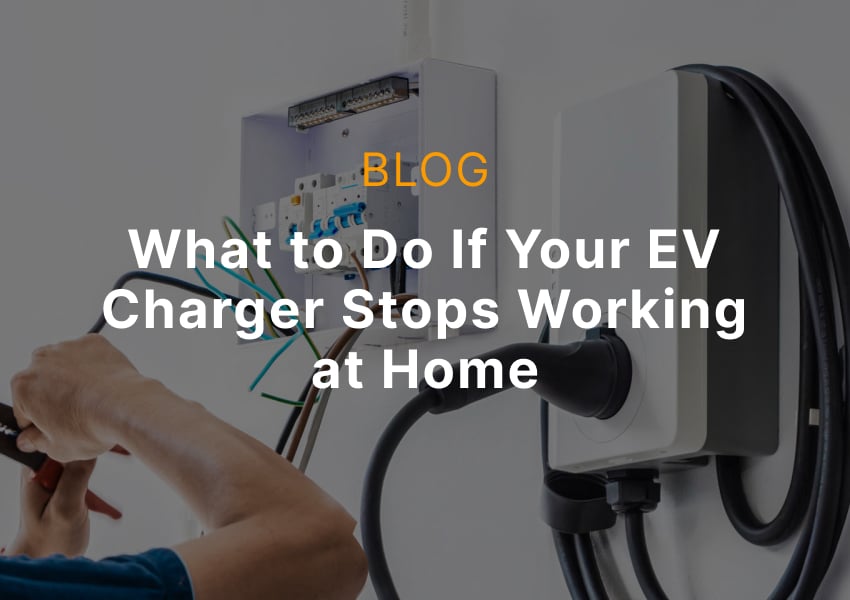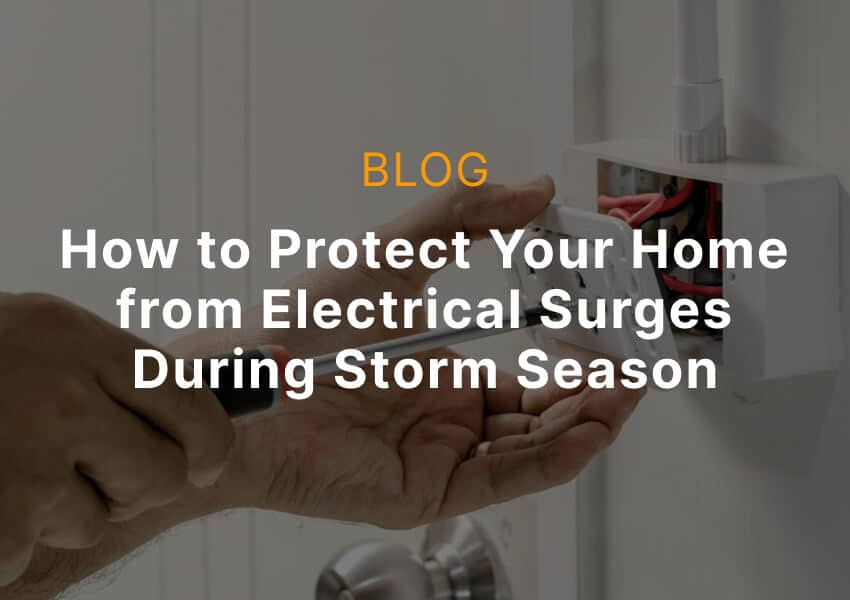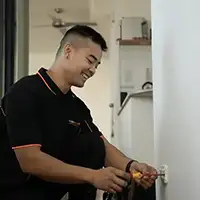Smoke alarms are one of the most important safety features in any home, but they can only protect you if they work properly. Regular testing is a quick and easy way to make sure your alarms will sound when it matters most. In this guide, Powerhub Electrical in Parramatta explains how to test your smoke alarms, what the current NSW regulations require, and when you should call a licensed electrician for help.
Why Testing Your Smoke Alarm Matters
A working smoke alarm provides early warning in a house fire, giving you more time to escape and potentially saving lives. Regular testing is essential because alarms can stop working without showing any obvious signs. Many fatal house fires in Australia happen in homes where smoke alarms are present but not functioning, often due to flat batteries or units that are too old. By testing your smoke alarms, you ensure that they are ready to alert you in an emergency.
Types of Smoke Alarms Found in Australian Homes
Understanding the different types of smoke alarms helps you choose the right protection for each area of your home:
Ionisation Alarms
These alarms are designed to detect fast-flaming fires, such as those started by cooking oil or flammable liquids. While effective in certain scenarios, they are more prone to false alarms and are commonly found in older Parramatta homes.
Photoelectric Alarms
Photoelectric models detect slow, smouldering fires, which are more likely to occur in living areas or bedrooms during the night. These are the preferred option recommended by Fire and Rescue NSW and are now the standard for new installations.
Hardwired vs Battery-Powered
Hardwired smoke alarms are connected directly to the home’s mains power and include a backup battery in case of outages. Battery-powered units are easier to install but require more frequent maintenance. Both types should be tested regularly to ensure reliability.
Legal Requirements for Smoke Alarms in NSW
Whether you own or rent, here’s what NSW regulations say about where smoke alarms must be installed and who’s responsible for maintaining them:
NSW Smoke Alarm Legislation
All residential properties in New South Wales must have at least one functioning smoke alarm installed on every level of the home. These alarms must meet the requirements of AS 3786 and should be located in or near sleeping areas. The law applies to owner-occupied homes, rental properties, relocatable homes, and moveable dwellings such as caravans.
Additional Requirements for Landlords and Tenants
Landlords are responsible for installing and maintaining working smoke alarms in all rental properties. Tenants must not tamper with, remove, or disable alarms. They are responsible for replacing backup batteries where required, unless the property is under a specific lease agreement stating otherwise.

How Often Should You Test Your Smoke Alarm?
Smoke alarms should be tested at least once a month to make sure they respond when needed. If your unit uses standard 9V batteries, replace them every 6 to 12 months depending on usage. Even hardwired alarms with a backup battery should have their battery tested regularly. The entire smoke alarm unit should be replaced every 10 years or sooner if it shows signs of fault or poor performance.
Step-by-Step: How to Test a Smoke Alarm Safely
To make sure your alarm works properly and alerts you when it matters, follow these safe and simple steps:
Step 1 – Inform Everyone in the Home
Let everyone in the household know that you are about to test the alarms. This avoids confusion or unnecessary concern when the beeping starts.
Step 2 – Use the Test Button
Locate the test button on the front of the smoke alarm and press it firmly. Hold it down until the alarm produces a loud, continuous beep. This confirms the alarm is receiving power and functioning.
Step 3 – Check Volume and Response Time
The alarm should sound almost instantly and be clearly audible throughout the area. If it is faint, delayed, or silent, the battery may be low or the unit may need to be replaced.
Step 4 – Confirm Interconnection (If Applicable)
If your smoke alarms are interconnected, testing one should trigger all connected units. This is important in larger homes to ensure every area receives the alert during a fire.
Step 5 – Clean the Alarm Unit
Use a vacuum cleaner with a soft brush attachment to gently clean around the smoke alarm vents. Dust, cobwebs, and insect debris can reduce sensitivity or cause false alarms. Clean the unit every few months as part of regular maintenance.
What If the Smoke Alarm Doesn’t Work?
If pressing the test button doesn’t trigger your alarm, here are the most common reasons and what you can do about them:
Dead Battery
If your alarm doesn’t sound during testing, the battery may be flat. Replace it with a fresh 9V or lithium battery and test again. Most non-working alarms are caused by battery issues.
Expired Alarm
Look for the manufacturing date printed on the back of the alarm. If it’s more than 10 years old, the unit is no longer compliant and should be replaced, even if it still beeps.
Wiring Issues (Hardwired Alarms)
For mains-powered smoke alarms, a failure to respond might indicate a wiring fault. If the circuit breaker is on and the unit still doesn’t function, call Powerhub Electrical for safe inspection and replacement.
Tips for Ongoing Smoke Alarm Maintenance
To keep your alarms in top working order long term, here are essential maintenance tips every homeowner should follow:
Replace Batteries Annually (Unless 10-Year Lithium)
If your alarm uses a standard 9V battery, swap it out every 12 months. Even if it hasn’t beeped or failed, replacing the battery ensures continued protection.
Clean the Alarm Every 6 Months
Use a vacuum with a soft brush to gently clean the alarm vents and casing. Removing dust and insects prevents sensor blockages and reduces the risk of false alarms.
Replace the Entire Unit Every 10 Years
Even well-maintained smoke alarms lose sensitivity over time. Once an alarm reaches 10 years of age, it should be replaced with a new, compliant model.
Install Photoelectric Interconnected Alarms
When upgrading, choose photoelectric alarms that are interconnected. These provide faster detection and will trigger all units throughout the home if one senses smoke. This offers wider coverage and earlier warnings during an emergency.

When to Call a Licensed Electrician
If you’re dealing with any of the following, it’s time to bring in a qualified professional:
Installing or Replacing Hardwired Alarms
Only a licensed electrician is permitted to install or replace 240V hardwired smoke alarms in NSW. This guarantees proper wiring, safety, and compliance with state regulations.
Upgrading to Interconnected Photoelectric Systems
Still using outdated ionisation models or standalone alarms? A licensed electrician can upgrade your home with modern, interconnected photoelectric smoke alarms for better protection.
Troubleshooting Alarm Malfunctions
Frequent false alarms, beeping, or failed tests may signal sensor or wiring faults. Don’t ignore the signs; professional inspection and repair ensures your system works when it’s needed most.
👉 Need help with smoke alarm installation or repairs? Book a licensed electrician like Powerhub Electrical today for reliable, compliant service.
Frequently Asked Questions
How do I know if my smoke alarm is working properly?
Press the test button. A loud, instant beep means it’s working. If the alarm is silent or weak, it needs battery replacement or full replacement.
What happens if I don’t maintain my smoke alarms in NSW?
You could face fines or put your family at risk. Rental properties must have working alarms by law, and owners are responsible for maintaining them.
Can I install my own smoke alarms?
Battery-operated alarms can be installed by homeowners. Hardwired models must be installed or replaced by a licensed electrician.
Why does my smoke alarm beep randomly at night?
This is often due to a low battery. If replacing it doesn’t fix the issue, the unit may be faulty or outdated.
What’s the safest smoke alarm to use?
Photoelectric, interconnected smoke alarms are the most effective. They detect smouldering fires early and meet the latest safety standards.
How many smoke alarms do I need in NSW?
At minimum, one on each level of the home and near all sleeping areas. More may be required depending on layout or property use.





